
Understanding Stick and Panel Options
When it comes to choosing stile and rail doors, a lot of time and effort will go into choosing the perfect panel layout, wood type and stain color. Let’s explore an aspect of the door that is not often discussed but plays a pivotal role in both stability and aesthetics: Wood skin thickness.
The Thin or the Thick: Stability & Aesthetics
In the context of what we are speaking to here, stability is resistance to the natural movement of wood in response to changes in environment, primarily humidity. Wood, being a hygroscopic material, expands and contracts with fluctuations in moisture levels. The thickness of the wood directly influences the extent of this movement.
Rule of thumb:
thinner the wood = more stable (i.e. less movement)
There is little aesthetic change with skin thickness for certain wood types. Generally the prime, non-rustic woods will show little to no difference if the thickness is reduced. Knotty, rustic wood are best to keep as thick as possible to enhance the depth of the wood’s knots and natural beauty.
Movement by Wood Type
Different wood species also react differently to changes in humidity. In simple terms, certain wood types are more stable than others. White Oak, for example, will have more movement to environmental changes than Alder will.
You could deep dive into the scientific study of wood movement and check out further information on Equilibrium Moisture Content (EMC) tables and the Dimensional Change Coefficients by respective wood types. Or, feel free to use the quick look guides found throughout the Treely Doors™ website showing stability rankings for each wood type offered:
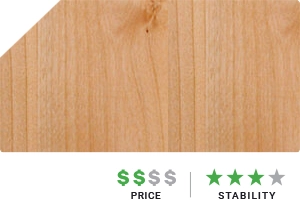
Different Climates = Different Challenges
Throughout the United States there are vast differences in climate conditions, which is key to remember when choosing the best wood for your interior doors. Depending on the location, certain wood species and thicknesses are going to be better choices both for the structural stability of the door and for their aesthetic qualities.
We are always here to help, if you have specific questions based on your geographic location we are more than happy to speak with you and discuss your unique project challenges.
Feel free to reach out anytime.
Treely™ Door Component Options
When exploring material options we encourage clients to engage with their dedicated Treely™ representative to determine the optimal option for their unique project.
Stain Grade
Stile and Rail Sticking Options
Treely™ offers a choice between 1/4″ and 1/8″ skin thickness options for our premium wood stile and rail doors.
Wood 1/4″ Thickness
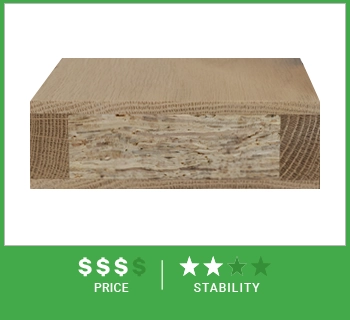
Wood 1/8″ Thickness
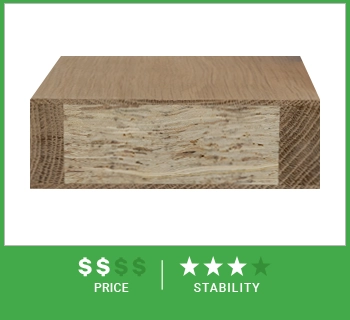
Stain Grade
Panel Options
In addition to selecting the optimal wood skin thickness, there is also the option to select the panel material type. For solid wood doors the options include either solid wood or a veneer with an MDF core.
Solid Wood
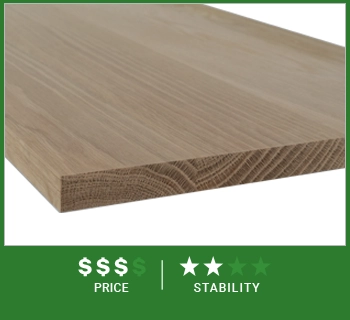
Wood Veneer with MDF Core
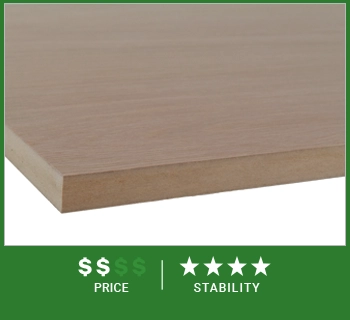
Paint Grade
Stile and Rail Sticking Options
Decisions for paint grade material options are primarily based upon a balance of stability, cost and overall durability.
For Treely’s™ paint grade doors, the stile and rail options are a choice between solid wood 1/8″ skin thickness or MDF skin.
Wood 1/8″ Thickness

MDF
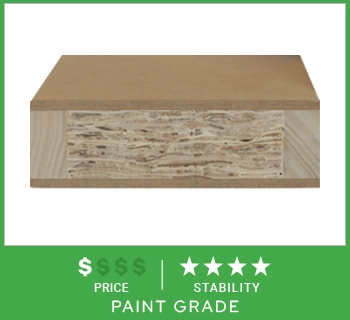
Paint Grade
Panel Options
Options for Treely™ paint grade panels are either solid wood or MDF.
Solid Wood

MDF
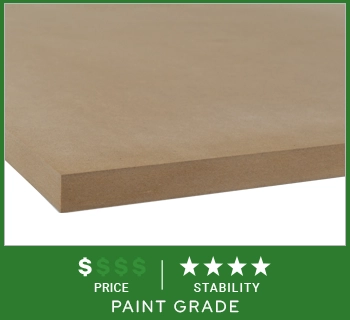
Our goal is not to complicate but to empower you with choices. Reach out to a Treely™ representative today to discuss these options further and ensure that selections align seamlessly with your vision and project goals.
If you have any questions about wood stability or what options are best for your particular project, please don’t hesitate to reach out.
Treely Doors™ sells throughout the United States and we are here to help guide you to the best production selection for your project’s needs.